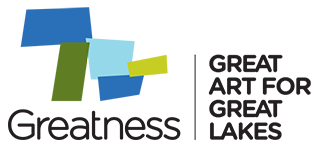As water challenges increase worldwide, international discussion and cooperative action are shifting to prioritize water security, including both quantity and quality. March 22, 2018 marked the start of a New Decade for Water – “Water for Sustainable Development.” In preparation for this change in International Decades, UN-Water set up the Integrated Monitoring Initiative to begin addressing challenges and laying the ground work for achieving targets under Sustainable Development Goal 6 – clean water and sanitation for all.
In Canada, consideration of cumulative effects in aquatic monitoring is being recommended across all levels to tackle multidimensional water challenges. Cumulative effects are changes that occur over regional areas over a long term of many years, often considering interactions of many smaller effects (e.g., rising water temperatures combined with pollution) that can work together to create big impacts.
For example, in the late 1960s and 70s, an increase of the nutrient phosphorus in Lake Erie caused an explosion of algae, which in some areas was followed by low-oxygen ‘dead zones’ in a process called eutrophication. By the 1990s, many sources of phosphorus were thought to have been eliminated after reductions were made in laundry detergents and sewage treatment plant effluents. However, in the new millennium, invasive zebra and quagga mussels near the shores of Lake Erie were found to trap phosphorus, concentrating it in colonized areas and releasing it later in a different form. This had several effects that work cumulatively to make the algae problem worse:
- The explosion of mussels clarified the water, allowing sunlight to penetrate more deeply, which allows more algae to grow; and
- Mussels suck in and filter phosphorus from the water column, convert it in their bodies to a form that algae can use more easily, and then release it (after a brief time delay) close to the shore. This basically creates an algae buffet.
- In the Eastern basin (where we are located), the most common nuisance algae need hard surfaces to grow on/attach to. The dense hordes of mussel colonies turned our sandy/muddy shoreline into a rock-hard surface, providing a base on which algae can grow prolifically (i.e., algae can attach to the mussels themselves).

Cladophora and zebra mussels, Donner’s Point, Lake Michigan. Credit: National Park Service
Nuisance algae in the Eastern basin foul boat propellers and are often found in huge amounts rotting on beaches or clogging pipes. In the Western basin, harmful (sometimes toxic) algae are getting worse as well. The record bloom in 2015 left roughly half a million people without water for days to weeks. Similar conditions were seen in 2017, with predictions for these scenarios to continue worsening. Now, authorities are looking ‘upstream’ to the tributaries of the Great Lakes to restore water quality. In the Eastern basin, the Grand River is one of the major contributors (historically the greatest contributor) of nutrients like phosphorus.

This research is a project under the Lake Futures initiative at University of Waterloo (part of Global Water Futures ). Its purpose is to propose a cumulative effects monitoring framework for the interface area of the Grand River and Lake Erie (also known as a freshwater estuary). Objectives of this research and of the monitoring framework are to:
- Update the monitoring priorities used to guide monitoring in the area, which were last updated in the early 1990s;
- Be guided by a foundation built on a combination of sound science and Indigenous Knowledge;
- Coordinate various monitoring efforts in the interface area while ensuring applicability to decision-making.

Study areas map
Public Engagement – GAGL Workshop Evaluations
During each of the GAGL workshops, an anonymous project evaluation will be filled out by all participants. These evaluations will used for GAGL’s and Elaine’s research, and will be accompanied by hard copies of an information letter should you want more details about the research. The evaluation questions will focus on individual values and connections to Lake Erie and the Grand River. Examples of questions may include: What activities do you enjoy on the lake? Do you feel your lake is healthy? What are some of the issues you feel should be prioritized? Do you have ideas or recommendations for solutions to these issues?
Your opinions and comments will be used to guide the recommendations for monitoring and management as well as the Great Art for Great Lakes program as a whole.







